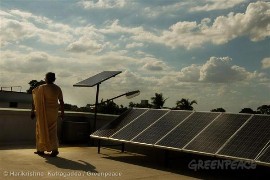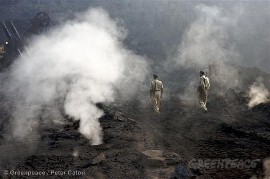The Bihar state government has devised a tax incentives plan to encourage private players to invest in solar energy. This move is especially significant since the state has been reeling under massive power shortage. The tax benefits include an exemption of registration and entry tax on installation of solar power plants on wastelands in the state. This puts the unutilised land to good use and the abundant sunshine the state receives is harnessed here and used for power generation. [1]
The Chief Minister of Bihar has even installed solar panels at his official residence in a bid to create more awareness of the potential of this renewable resource. After conducting a survey which proved the immense potential of solar power generation in the state, the government has sent proposals to the state cabinet for approval to generate 250 MW through various solar power projects.
The World Institute of Sustainable Energy (WISE) found that Bihar receives 280 days of sunshine in a year and falls in the moderate solar radiation zone of the country. This means the state is perfectly positioned to generate a lot of solar energy to satisfy its power needs. The tax incentives help smaller players to also enter the market and this move should see a rise in solar power production in the state. Now the real question is will other states in the country follow suit and provide attractive subsidies to encourage more investment in renewable energy?
WMO Bulletin warns that greenhouse gas concentrations reach highest level
The United Nations World Meteorological Organization (WMO) released their annual Greenhouse Gas Bulletin in November and it revealed that the concentration of greenhouse gases in the atmosphere reached a record high in 2011. [2]
Smoke from the uncontrollable fires in the Jharia coal mine contains poisonous gases like carbon dioxide. Jharia was once a belt of dense forests. © Greenpeace / Peter Caton
The primary greenhouse gas, carbon di oxide, also the main cause of global warming reached a level of 390.9 parts per million in 2011. This is 140 % of the pre-industrial levels and nearly two parts per million higher than the 2010 carbon dioxide levels. The burning of fossil fuels is the main source of carbon di oxide in the atmosphere. The other greenhouse gases are methane and nitrous oxide which reached a new high of about 1813 parts per billion (ppb) and 324.2 parts per billion respectively in 2011. Increasing concentrations of all these gases in the atmosphere are the causes of climate change.
WMO Secretary-General Michel Jarraud said, “These billions of tonnes of additional carbon dioxide in our atmosphere will remain there for centuries, causing our planet to warm further and impacting all aspects of life on earth. Future emissions will only compound the situation.”


